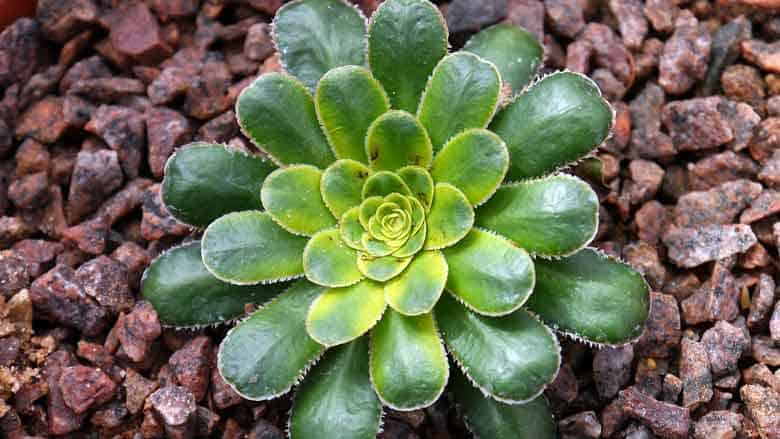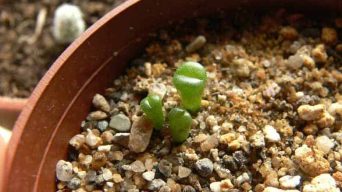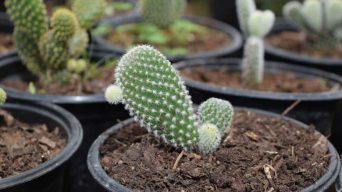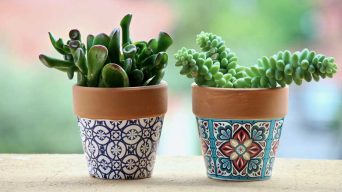Succulents are a popular houseplant that can be grown in many ways.
Some people think they need to put soil at the bottom of their pot before planting it with succulents.
Others believe that succulent plants may survive on top of other objects such as rocks, gravel, or wood chips without any sort of soil beneath them.
Succulents are known for their ability to grow in harsh conditions. But can succulents grow in rocks without soil?
Can Succulents Survive Without Soil?
Succulents can grow without soil because they store water in their leaves. This allows them to survive for long periods of time with no access to surface moisture.
However, to do so, they must have a significant amount of water and nutrients available from the surrounding environment.
For the most part, succulents can grow in rocks without soil and water. The key is to have a rock that allows for easy absorption of water and nutrients.
One possible issue with growing succulents in rocks without soil is the inability to provide them everything they need over time.
Soil has many benefits, such as providing air pockets that can absorb excess moisture or dryness more efficiently than just rocks alone would allow.
It also protects against pests and diseases because there are no open spaces on top where bugs could get inside and attack this plant’s root system.
Another issue with growing succulents in rocks without soil is that they may not withstand extreme weather changes and fluctuations.
In a rock, there’s nothing to protect this plant from these environmental factors like wind or water that could blow sand up into its leaves when there are no other plants around for shelter.
Unless you know exactly what type of environment your succulent will grow best in, we recommend sticking with potting soil instead.
It provides all the benefits needed for this type of plant, which cannot be obtained by just using rocks as an alternative.
Can You Plant Succulents in Rocks?
It is possible to plant succulents in rocks, but it will not work if you do not water them regularly. They need a lot of water and cannot grow without soil for more than a week.
The roots may start rotting because they cannot absorb enough moisture from the air or the rock surface.
If your plants become too dry, their leaves will wither and fall off, which can kill the entire plant due to the lack of nutrients being transported through its tissues.
These plants must receive an adequate amount of watering during hot months when there isn’t any rain.
The depth of the rock you choose to plant in should be at least an inch. This way, there is enough room for water to seep into it and reach your succulent roots without any dryness or lack of moisture reaching them.
The rocks will help retain this moisture to get wet from the surface and below the ground level where their roots live.
It’ll take some time before these plants establish deep roots that can go down beyond a few inches- usually about six months. But once they do, then it won’t matter how shallow the planting area is as long as frequent watering sessions are happening regularly.
In addition, there is the issue of providing nutrients for succulents planted in a rock without soil. This issue can be solved by occasionally adding some nutrient-rich fertilizer to the water you’re using for your plants.
The best option, by far, is potting succulents in a container with soil and then planting them in rocks around it as decoration! This way, there’s no need to worry about providing nutrients or having space for watering.
How to Plant Succulents in Rocks and Soil?
You can plant succulents in rocks with soil. You will need:
- Succulent plants (enough to fill a pot or container)
- Rocks (in various shapes, sizes, and textures)
- Succulent/Cactus Mix (try to avoid regular potting soil)
- Watering Can
- Garden Shovel
Rocks come in lots of different shapes, sizes, and textures, so you’ll have plenty to choose from when planting succulents.
Fill the bottom third of the container with rocks before adding any succulent soil mix, as this is where most of them will be positioned for support.
Ensure there are no gaps between rock layers that might trap water instead of draining it away.
Add enough cactus/succulent mix into the top two-thirds of the pot until the rocks are covered, then scatter the succulents over the potting mix.
Fill in any gaps with more soil to help hold them down and make sure there is a good amount of space between each plant as they will need plenty of room to grow into their full shape.
After planting succulents, water them thoroughly but don’t drown them. For this reason, it’s best not to use too much succulent potting mix when filling up your container.
Keep an eye on how moist the surface looks like, and keep watering regularly so that all the plants get enough moisture throughout their growing process.
This may take anywhere from one month upwards, depending on what type of succulent plant you have selected.
Why Do You Put Rocks on Succulents?
Many people use rock mulch or some other organic material as an accent plant for their garden. Many more still use them as decor items inside their home.
Most don’t realize that placing these rocks onto your plants can have significant benefits for both the environment around them and the plant itself.
Rocks provide an excellent barrier from wind, especially if they are placed at ground level, where winds will hit hard before touching anything else nearby.
They also protect against sun damage which means less water consumption since drought isn’t usually something one wants in their garden.
In addition to that, rocks bring a sense of permanence and stability to the space, which can help people feel more at home in an otherwise foreign environment.
They also let air flow through them, so water doesn’t accumulate on top as much when it rains or snows. These rocks are great for succulents because they offer protection from heavy rain without getting too hot during sun hours.
This prevents them from needing gallons of water every day as most other plants might need.
Rocks can be used without soil if they have enough drainage holes and don’t move around too much. You can also place stones on top of the ground to give succulents a different type of environment while still letting the plant stay rooted in one spot.
A few potting pebbles might be enough for smaller plants, but if you want more variety or have larger plants, then it’s best to add some dirt as well, so they’re not just sitting there all day long with nothing to do!
The result is an earth-friendly succulent rock garden that has both beauty and function, which is really what any good space should strive towards being anyways.
Not only does this provide something unique aesthetically speaking, but it can simplify life by requiring less water.
What Type of Rocks Should I Use for a Succulent Garden?
Many types of rocks can be used for succulent gardens, but the most common ones are granite, marble, and quartz. These three types of rocks have very different properties when it comes to succulents.
Granite
Granite is an ideal type of rock because its porous nature means that air will stay flowing through, helping roots grow faster. It also provides good drainage around the bottom layer.
However, this type of stone may need extra fertilizer to keep plants healthy.
Another downside to using granite when gardening with succulents is that it’s heavier than other stones like marble or quartz. Which means it takes a bit more time to clean the rocks.
Marble
Marble is very porous, but not quite in the same way as granite; this type of stone has small holes throughout that make excellent breathing spots for the roots.
It’s also softer than other types of rock, so it can be easier on your hands when you’re planting and pulling out succulents if they get too large or start dying off.
One downside to marble, though, is that over time, plants may die because there aren’t enough drainage features like with granite. This means watering will take longer than usual and need close attention!
Quartz
Quartz might sound like an unusual choice for succulent gardening.
Still, many people have had success using this type of rock in their gardens.
The hardness is excellent for succulents, and the crystal structure means it’s often filled with tiny pores that will hold water well – perfect for root growth!
Final Thoughts
The main point I am trying to make here is that succulents cannot live long-term without dirt or other kinds of nutrient-absorbing substances under their root system.
They don’t have enough room to form strong root growth if only standing on stones alone.
This is why succulents need to be grown in a pot with soil.
The soil allows the root system to grow down and out, absorbing nutrients from the ground.







